Molecular Photodynamics Group
Publications
73
Citations
753
h-index
15
Authorization required.
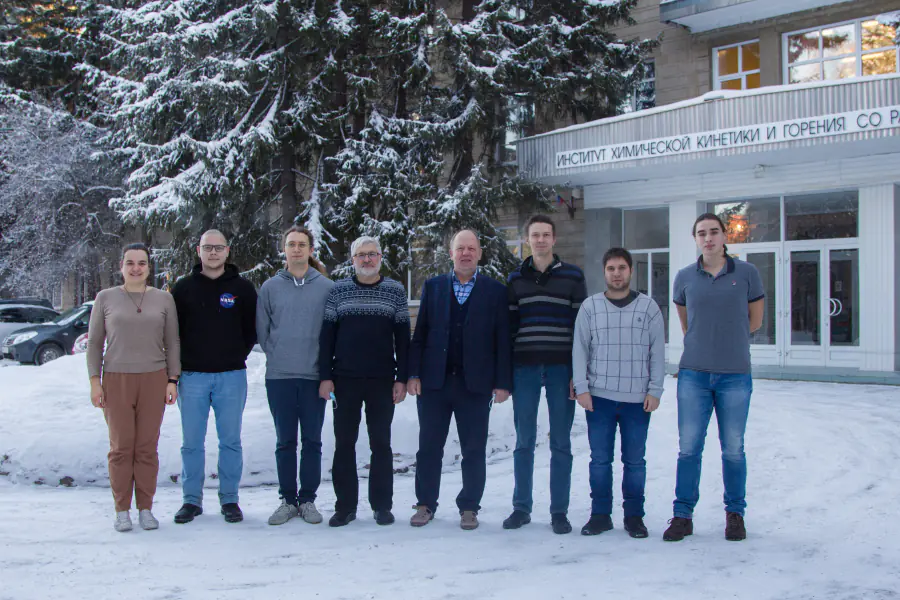
The main topic of the group is related to the study of the mechanism and dynamics of photoinitiated processes in molecules and loosely coupled molecular complexes, including Van der Waals complexes of molecular oxygen X-O2, as well as collisional X-O2 complexes in the gas phase and "contact" X-O2 complexes in a condensed medium. Supramolecular electron-excited states of Van der Waals oxygen X-O2 complexes are also studied using quantum chemistry methods, which determine the influence of the molecular environment on the photophysics and photochemistry of oxygen in the gas phase and condensed media.
- Velocity map imaging
- Laser spectroscopy
- Absorption spectroscopy
- Photoluminescence
- Mathematical and physical modeling
- Mass spectrometry
Alexey Baklanov
Head of Laboratory
Alexandra Pyryaeva
Researcher

Vladislav Rogoveshko
Engineer

Kirill Ershov
Junior researcher

Alexandr Bogomolov
Junior researcher

Aleksey Yanshin
Student

Roman Safin
Student
Research directions
+
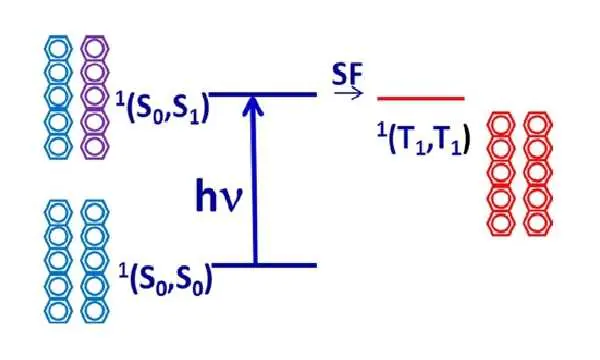
Singlet exciton fission in polyacene dimers in the free state and during isolation in a helium nanocaple
+
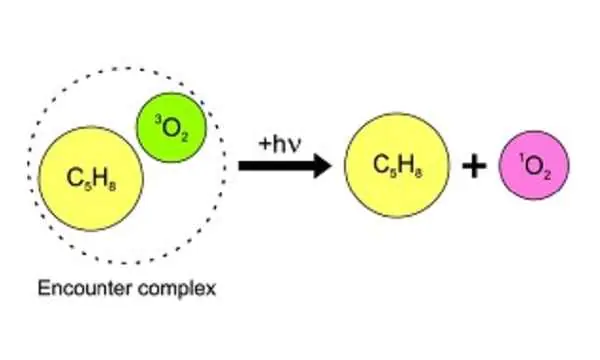
Great interest in the phenomenon of "Singlet Exciton Fission" (Singlet Fission) has arisen in the last decade in connection with the prospects for its use in organic photovoltaics. According to estimates made in the literature, the use of DSE can increase the marginal efficiency (Shockley–Quaisser limit) of solar energy conversion into electrical energy in solar panels by about 30%. This line of research, conducted jointly with a group from Freiburg and Novosibirsk, is aimed at an experimental study of the Singlet Exciton (DSE) fission process in Van der Waals dimers of polyacenes (tetracene, etc.) in order to identify the nature of the participating electronic states of the dimer and the sequence of elementary stages determining the DSE mechanism, as well as measuring the dynamics of the DSE process. We intend to investigate both free dimers under molecular beam conditions and dimers isolated in helium nanodrops. The use of dimer isolation capabilities in superfluid helium nanodrops at a very low temperature (0.4 K) allows us to expect a radical simplification of the dimer absorption spectrum, which will be used to identify the nature of the electronic state of the dimer, defined as a singlet exciton. This will also make it possible to "isolate" the intermediates that arise in the DSE process at the first, so-called "dark" stage, and identify them using photoelectron spectroscopy. Measuring the velocity maps of polyacene molecules formed after excitation of dimers above the DSE threshold should make it possible to determine the quantum yield of the DSE process and determine the contribution of the charge transfer state in a singlet exciton, which is important to verify existing ideas about the DSE mechanism. It is also planned to use the two-pulse femtosecond excitation-sensing (pump-probe) technique to measure the dynamics of the sequence of elementary stages of the DSE process in dimers both in conditions of a helium nanocaple and in free dimers in a molecular beam. The existing experience of our research groups working together gives reason to hope for their successful cooperation in this project.
Weakly bound X-O2 complexes as a new source of singlet oxygen
+
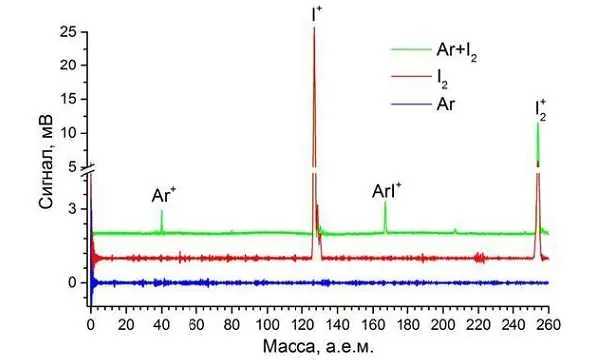
The presence and influence of the molecular environment leads to a radically new photochemistry of oxygen molecules. In particular, the processes of formation of such reactive oxygen species as, for example, singlet oxygen molecules O2(a1Δg), the formation of which is prohibited during photoexcitation of "isolated" oxygen molecules, become permitted. Singlet oxygen molecules, due to their high reactivity, play a key role in a variety of natural photobiological and photochemical processes and are widely used in practice. Recently, the development of singlet oxygen applications has greatly accelerated, so a detailed study of the mechanisms of its formation is a very important and urgent task. In this regard, the study of the singlet oxygen formation process during photoexcitation of weakly bound X-O2 complexes is not only of fundamental but also of applied interest, since this process represents a new method of singlet oxygen generation and opens up new prospects for the development of a number of practical applications. This process provides a new mechanism for photooxidation of various molecules in a condensed medium; and can also be used in UV purification of air and water, in photobiology and medicine. In addition, the study of photochemical processes involving loosely coupled X-O2 complexes allows us to understand the mechanisms of the influence of a loosely coupled environment on the processes of phototransformation of molecules, because currently individual molecules remain the main objects of research in photochemistry. Within the framework of this direction, we conduct a qualitative and quantitative study of the mechanism of singlet oxygen formation during photoexcitation of weakly bound X-O2 complexes with different X molecules in molecular beams, gas and liquid. Van der Waals complexes, which can be obtained using the pulsed molecular beam technique, are a very convenient model for studying photoprocesses in loosely coupled complexes. The conditions of the molecular beam make it possible to use the most "powerful" research methods, such as the method of measuring photofragment velocity maps, to study the mechanism of photoprocesses. We use the obtained data on the mechanism of singlet oxygen generation in Van der Waals oxygen complexes to study the photogeneration of singlet oxygen in the gas phase and in condensed media. These data make it possible to unambiguously predict the position of the supramolecular absorption band of weakly bound oxygen complexes corresponding to the photogeneration of singlet oxygen, which makes it possible to purposefully generate singlet oxygen in conditions where direct measurement of the supramolecular absorption band is impossible. For studies in the gas and condensed phase, we use an experimental technique that includes irradiation of a gas mixture or solution containing O2 with laser radiation in the range from UV to near IR and measurement of the IR luminescence signal of singlet oxygen at 1.27 microns depending on various parameters (radiation energy, wavelength, pressure The study of the formation of singlet oxygen from weakly bound X-O2 complexes with an arbitrary X molecule is of particular applied and fundamental interest and, in particular, can improve and simplify methods for studying the effect of singlet oxygen molecules on the vital activity of biological objects. Definitely, the process of formation of singlet oxygen from weakly bound complexes can be present in our environment wherever there is molecular oxygen, and it is important to understand the mechanism and quantify the role of this process in nature. Within the framework of this study, we plan to obtain a qualitative and quantitative assessment of the role of the studied process of singlet oxygen formation in the Earth's atmosphere, the processes of photooxidation of biologically important molecules, and also to assess the possibility of its practical application.
Investigation of the formation of covalently bound argon
+
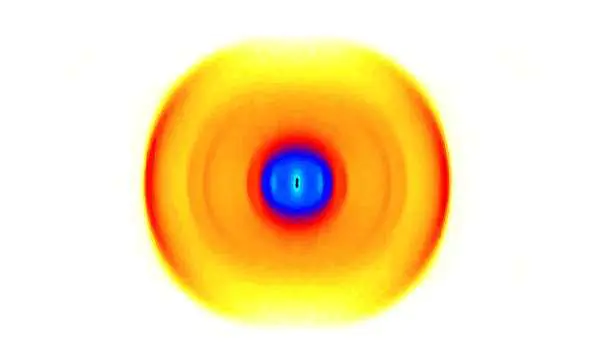
Earlier, when studying the photodissociation of Van der Waals Ar-I2 complexes, we observed the formation of Ar+ and ArI+ ions, and established that the Ar+ ion is formed from a particle in which it was covalently bound. This line of research in our group is aimed at establishing the nature and mechanism of formation of Ar+ and ArI+ ions. The ArI+ ion is a reactive particle, one of the few argon compounds known today. The study of its properties and methods of its generation opens up new opportunities in the field of chemical synthesis. In parallel with experimental studies, we study the dynamics of the formation of chemically bound argon using modeling using paired potentials borrowed from the literature and calculated ab initio. These studies open up a completely new approach to the generation of argon compounds, which is an important task, since they, by analogy with compounds of other noble gases, can be very reactive and can be used for oxidation or halogenation in organic synthesis, the creation of new materials. The preliminary results obtained and published by us suggest a fundamentally new mechanism for the formation of chemical bonds with extremely inert substances. We are partially conducting these studies together with colleagues from the research group of the University of Freiburg (Germany).
A gas-phase approach to the study of elementary processes of heterogeneous photocatalysis
+
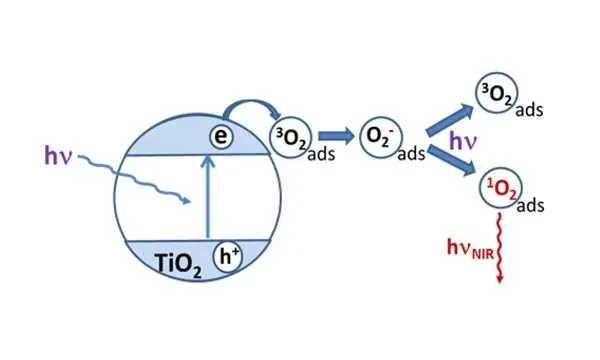
The production of hydrogen for hydrogen energy using photocatalytic splitting of water using solar radiation, purification of water and air from organic impurities, processes of "green chemistry" – these and other existing or promising practical applications determine the great interest of researchers in the problems of photocatalysis. The possibility of using solar radiation is important for the application of photocatalysis. The most effective of the known photocatalysts is titanium dioxide, the main disadvantage of which is the weak overlap of the absorption spectrum with the solar radiation spectrum. To shift the absorption spectrum to the visible region, modification of titanium dioxide is used by applying dyes, or by doping with various impurities. For the purposeful formation of effective photocatalytic systems, it is necessary to know the mechanism of the photocatalytic process, including the mechanism of photogeneration of highly active intermediates that determine the process of photocatalysis on titanium dioxide. Photocatalysts based on another semiconductor, tungsten trioxide WO3, demonstrate high activity and better correspondence of the absorption spectrum to the solar radiation spectrum. To purposefully improve the characteristics of a WO3-based photocatalyst, it is also necessary to know the mechanism of generation of reaction intermediates that determine the course of photocatalytic processes on its surface with the participation of oxygen. It is known that surface centers play an important role in heterogeneous catalysis. Moreover, there is a promising direction in photocatalysis, which uses actually isolated centers based on titanium oxide with unsaturated coordination (single site catalysts). A large number of examples show that this makes it possible to implement unusual photocatalytic processes with high efficiency, where massive photocatalysts are less effective. The mechanism of action of such centers is unknown. The approach proposed in this project of using small clusters (TiO2)n as a model of a photocatalytic center allows us to investigate the mechanism of photogeneration of reactive intermediates at such centers. As for tungsten trioxide clusters, as follows from the literature data on the quantum chemical study of their electronic properties, according to the structure and nature of electronic states, already small clusters (WO3)n (n=2-4) are an adequate model for studying photocatalytic processes occurring in massive photocatalyst samples. To study these processes, our work implements a new approach based on the use of complexes of small clusters of titanium (TiO2) and tungsten (WO3) oxides with oxygen as model systems for studying photoprocesses occurring on the surface of a photocatalyst. This approach seems extremely promising, since the possibility of generating such complexes in a molecular beam makes it possible to use powerful research methods, such as the technique of visualizing photofragment velocity maps, which are designed to study processes in the gas phase, to identify and study elementary processes of heterogeneous photochemistry. As a result, we propose to identify and investigate the primary photoprocesses determining the photocatalytic activity of titanium dioxide and tungsten trioxide, to establish the structure and energy of oxygen complexes with clusters of titanium dioxide and tungsten trioxide, and to investigate the photophysics and photochemistry of these complexes, including to investigate supramolecular photoprocesses similar to those we found in weakly bound oxygen complexes. It is also proposed to investigate the effect of the inclusion of water molecules in such complexes. In the course of our research, the process of formation of singlet oxygen on the surface of TiO2 has already been discovered, proceeding through the formation of superoxide anion particles. This process opens up the possibility of time-resolved detection of superoxide anion by luminescence of singlet oxygen, which appears as a result of photo-splitting of an electron. We have shown in our work that singlet oxygen reacts with titanium dioxide to form titanium peroxide without an activation barrier. We believe that similar rapid processes occur on the surface of the photocatalyst particles, namely peroxide compounds resulting from the interaction of singlet oxygen with the surface of TiO2 particles. Due to the important role of titanium and tungsten peroxides, their study is of great interest. But to do this, you need to learn how to get them, which we plan to do in future research. Assessing the relevance of the planned research, it should also be noted that the importance of studying the mechanism of photogeneration of singlet oxygen and the implementation of a direct method for measuring the kinetics of processes involving superoxide anion are not limited to the problems of photocatalysis. The fact is that singlet oxygen is an active agent in many biological systems, and is also a key agent in photodynamic therapy, widely used in the treatment of oncology. Therefore, new knowledge about the mechanisms of singlet oxygen generation can be useful in many applications. The same applies to the superoxide anion, which plays an important role in many biological processes. Reactions involving this particle are important in terms of phenomena such as oxygen toxicity, the formation and development of malignant tumors, and aging processes. The superoxide anion plays a very important role in oxidative stress. Therefore, we believe that the results of our research aimed at studying the elementary physico-chemical processes of photocatalysis will be important in the application to the study of the above phenomena.
Publications and patents
Found
Nothing found, try to update filter.
Lab address
Новосибирск, 630090, Институтская 3, ИХКГ СО РАН
Authorization required.





